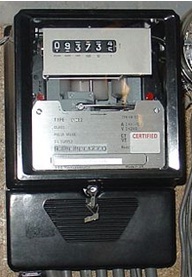

Yes that is the bottom line isn’t it ? Should be straight forward to answer if – the Ifs and but(s) appear and the issue becomes too confusing. Let me explain why.
Installed Wp Vs What we actually get on field.
Wp rating of the Solar Panel is what you pay for. However the Wp rating is based on Standard Test Conditions (STC) – which differ widely from the conditions in your installation. For example STC assumes 25 deg C for the Solar Cell temperature. What you have on your roof top is an ambient temperature of say 35 deg C and the Solar cell temperature operating at closer to 70 deg C ! As the output of the Solar module drops with increased Cell temperature -the maximum that you can get on the roof top is already lesser than what the name plate suggests. A good rule of thumb is about 75% of the rated Wp that you can get as the maximum.
Now that you have calculated the maximum Wp that can be extracted from the Solar Panel- you need to know how many units of electricity the panel would extract per day.
In India – you can assume 5.5 hrs equivalent of Wp – roughly for the calculation of Units generated. The extract-able energy from the Solar PV panels varies through the day and there would be a time close to noon when this is close to the maximum that can be extracted from the Solar Panels. Let us say Sun is available for 10 Hrs. When we say 5.5 hrs of Wp equivalent – what that means is that the amount of energy that can be extracted in Ten hours is equivalent to having 5.5 Hours of maximum Wp extracted.
Based on the thumb rule above and the 5.5 hrs Wp equivalent – an one kWp module will deliver approximately – 5.5 X 1 X 0.75 = 4.1 kWhr Or about 4 units per day .
The energy generated is only one side of the equation. It is useful only if the energy generated can be consumed !
Ex-tractable energy Vs What is actually consumed
In the absence of Grid tie option – where a solar installer can export excess energy into the local grid and can get paid for the same- offgrid installations can end up wasting extractable energy unless Solar Panels are undersized. There would be periods when the batteries are full and loads not enough to consume all the available energy from the installation. In this case – the charger ends up extracting lesser than the maximum power available – thus reducing the returns from the installation. Its difficult to match the load timing to the Solar power availability. Note however – this author feels that if the objective is to obtain sufficient back up – then that needs to be addressed first. That need would drive the panel sizing and the ‘wasted’ energy is not such a bad thing.
Yes – Installing Solar PV does save money.
Solar energy when used – saves on the power otherwise drawn from the grid for charging the batteries or powering the loads. However most offgrid systems still have a payback period of > 8 Years and compares well with alternatives like Diesel and not having power at all. In states like Kerala where the rate per Unit of electricity for increased consumption is much higher – Solar PV would deliver a shorter payback.

Your blog is much effective and thanks for sharing the information.
solar power systems batteries